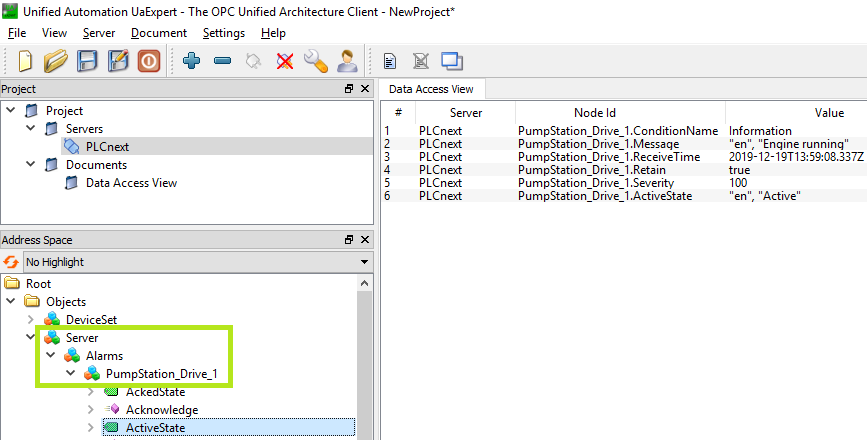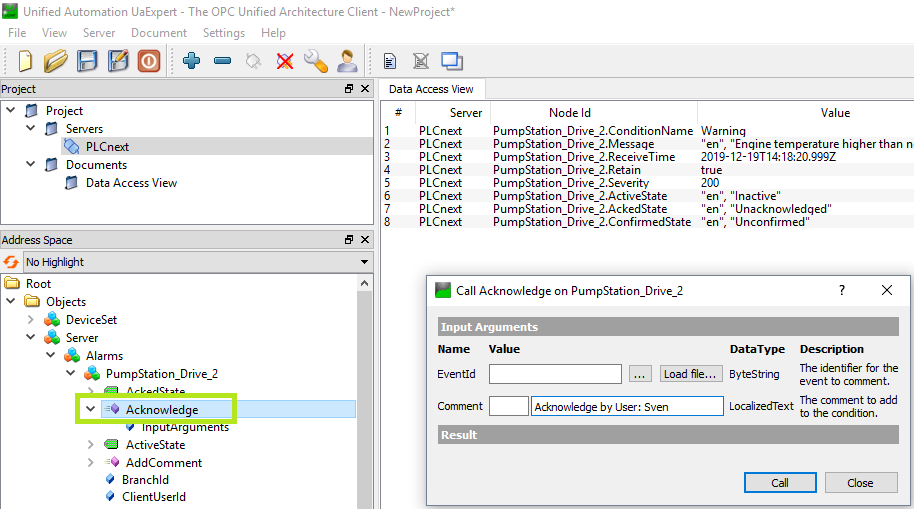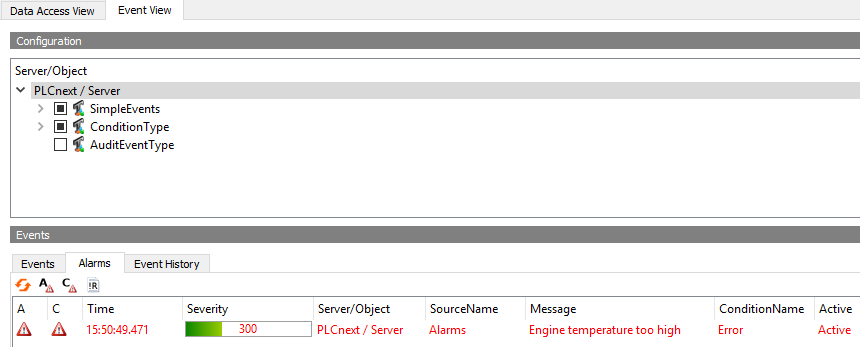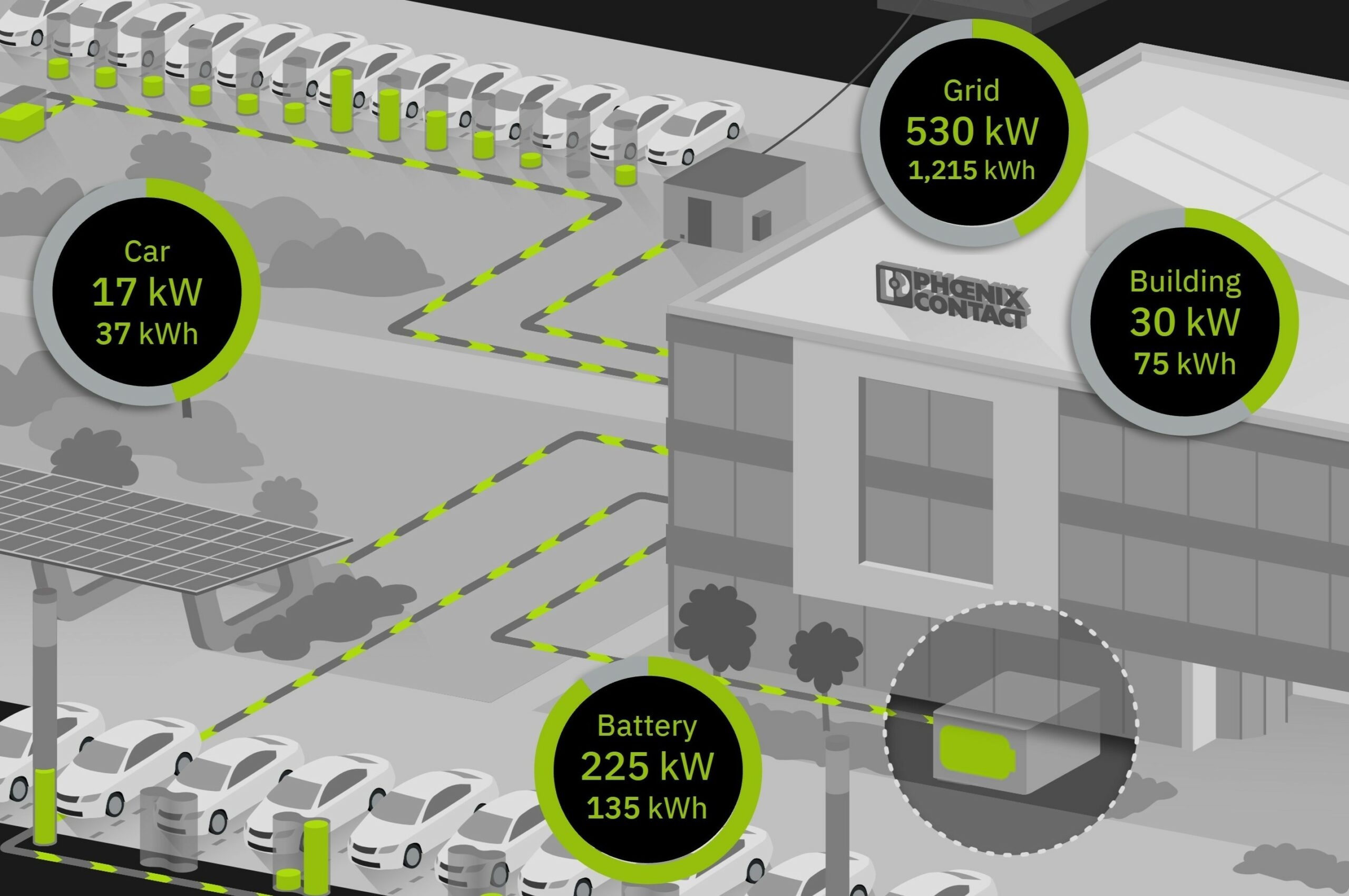The following functionality is based on the Alarms Dispatcher in PLCnext Technology.
It enables you to send alarms to other applications running on your PLCnext Control, whether it be a C++, Simulink®, IEC 61131-3 or an embedded OPC UA Server application.
I will explain some easy examples to make you familiar with this technology.
For more information about this topic: PLCnext Technology Info Center – Service Components – OPC UA Server
Example 1: Send information towards the OPC UA Server, acknowledgment and confirmation is not needed.
Program in PLCnext Engineer:
// The function block is used to register an alarm in the system. // An alarm must always be registered before it can be used in the system. ALM_REGISTER_1(ALARM := Alarm_1_State, EXECUTE := xExecute_Alarm_1, ALARM_ID := 'PumpStation_Drive_1', ALARM_TYPE := 'Information', SEVERITY := 100, DONE => xDone_Register_Alarm_1); // The function block is used to send alarm states to the OPC UA server. // The ALM_STATE structure connected to ALARM holds the alarm state. ALM_ALARM_1(ALARM := Alarm_1_State, ACTIVE := xInformation, // Indicates whether the alarm condition is active. MESSAGE := 'Engine running', AUTO_ACK := TRUE, AUTO_CONF := TRUE, RESET := xReset_Alarm_1, DONE => xDone_Alarm_1, RETAIN_STATE => xRetain_Alarm_1);
The result in UaExpert:

Example 2: Send a warning towards the OPC UA Server, acknowledgment and confirmation possible from the client
Program in PLCnext Engineer:
// The function block is used to register an alarm in the system. // An alarm must always be registered before it can be used in the system. ALM_REGISTER_2(ALARM := Alarm_2_State, EXECUTE := xExecute_Alarm_2, ALARM_ID := 'PumpStation_Drive_2', ALARM_TYPE := 'Warning', SEVERITY := 200, DONE => xDone_Register_Alarm_2); // The function block is used to send alarm states to the OPC UA server. // The ALM_STATE structure connected to ALARM holds the alarm state. ALM_ALARM_2(ALARM := Alarm_2_State, ACTIVE := xWarning, // Indicates whether the alarm condition is active. MESSAGE := 'Engine temperature higher than normal', AUTO_ACK := FALSE, AUTO_CONF := FALSE, RESET := xReset_Alarm_2, DONE => xDone_Alarm_2, RETAIN_STATE => xRetain_Alarm_2); // Extra information about this FB: // With a rising edge at the RESET input an alarm can be acknowledged and confirmed // by the alarm source (instead of the client). // A new message with ACKED_STATE=FALSE and ACKED_CONFIRMED=FALSE // (elements of the ALM_STATE structure; see below) is sent to inform the OPC UA server.
By calling the right function in UaExpert, you can confirm or acknowledge our test warning:

Example 3: Send an error towards the OPC UA Server, acknowledgment and confirmation possible from the client and the PLC program
Program in PLCnext Engineer:
// The function block is used to register an alarm in the system. // An alarm must always be registered before it can be used in the system. ALM_REGISTER_3(ALARM := Alarm_3_State, EXECUTE := xExecute_Alarm_3, ALARM_ID := 'PumpStation_Drive_3', ALARM_TYPE := 'Error', SEVERITY := 300, DONE => xDone_Register_Alarm_3); // The function block is used to send alarm states to the OPC UA server. // The ALM_STATE structure connected to ALARM holds the alarm state. ALM_ALARM_3(ALARM := Alarm_3_State, ACTIVE := xError, // Indicates whether the alarm condition is active. MESSAGE := 'Engine temperature too high', AUTO_ACK := FALSE, AUTO_CONF := FALSE, RESET := xReset_Alarm_3, DONE => xDone_Alarm_3, RETAIN_STATE => xRetain_Alarm_3); // Extra information about this FB: // With a rising edge at the RESET input an alarm can be acknowledged and confirmed // by the alarm source (instead of the client). // A new message with ACKED_STATE=FALSE and ACKED_CONFIRMED=FALSE // (elements of the ALM_STATE structure; see below) is sent to inform the OPC UA server. // The function block is used to acknowledge an existing alarm. ALM_ACK_3(EXECUTE := xAckAlarm_3, ALARM_ID := 'PumpStation_Drive_3', DONE => xDoneAckAlarm_3); // The function block is used to confirm an existing alarm. ALM_CONF_3(EXECUTE := xConfAlarm_3, ALARM_ID := 'PumpStation_Drive_3', DONE => xDoneConfAlarm_3);
Extra remark: UaExpert has also an event viewer.






Leave a Reply
You must be logged in to post a comment.